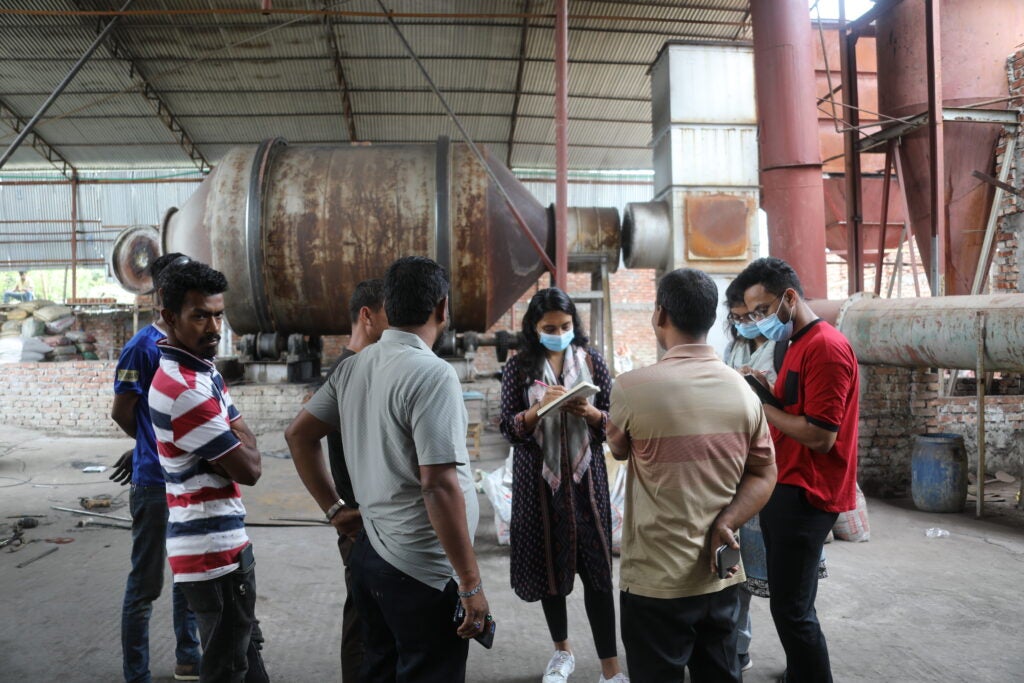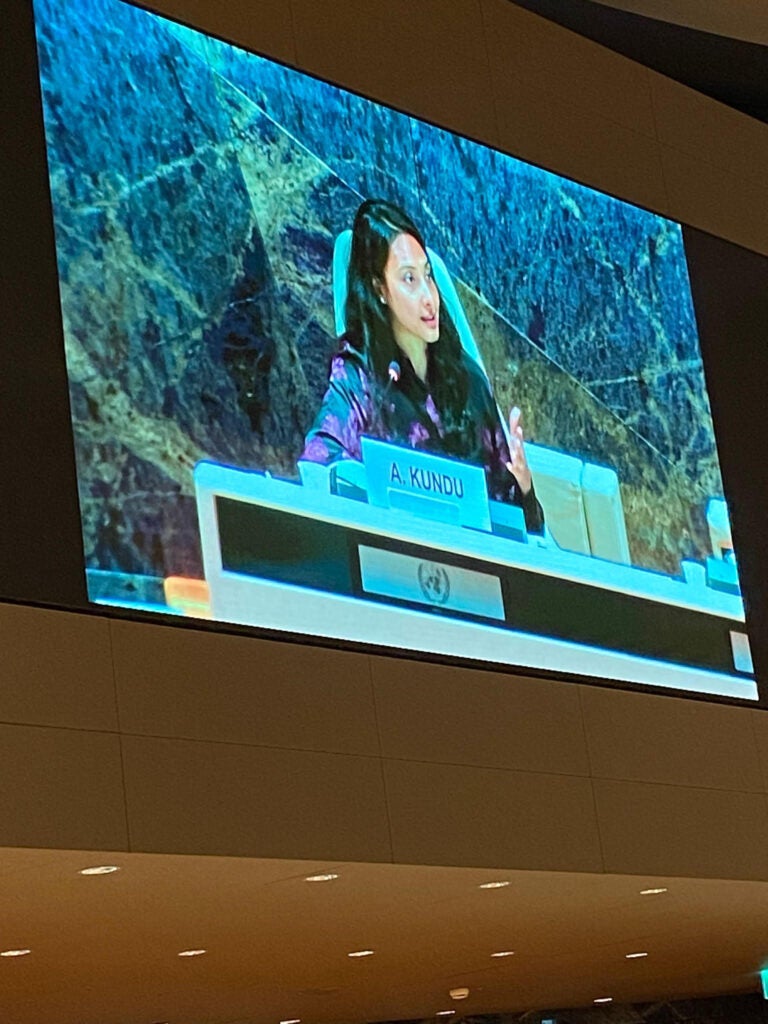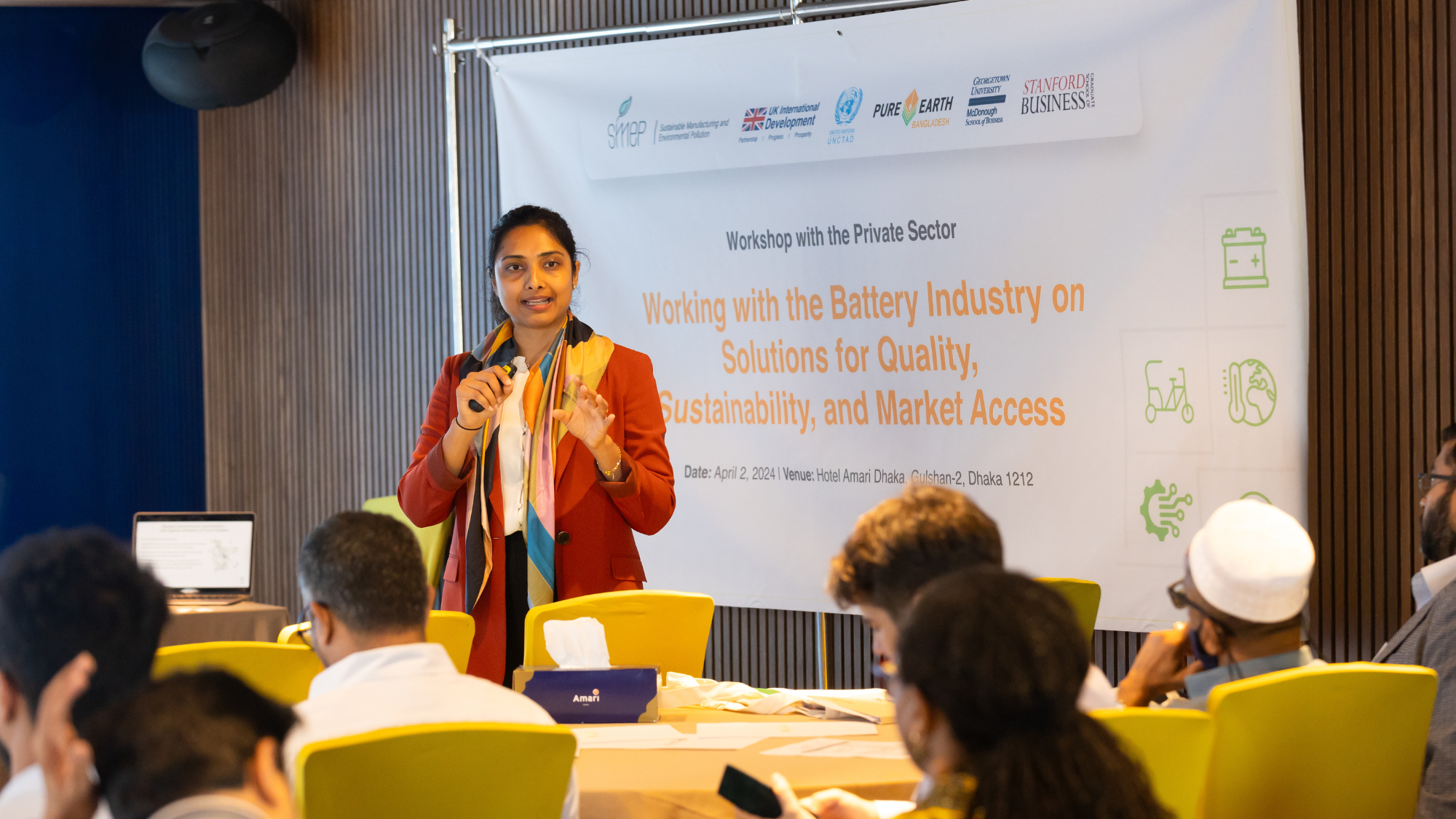Office Hours: Exploring the Intersection of Sustainable Technologies, New Business Models, and Regulations with Amrita Kundu
As business and sustainability become more intertwined, industries around the world are looking to tap into sustainable solutions and identify business models to deliver them profitably. Over the last decade, Amrita Kundu, an assistant professor of operations and analytics, has been working with companies across Asia and Africa to research ways to improve the adoption of sustainable technologies that can transform lives in developing countries. Kundu’s data and analytics-based research examines the intersection of business operations, customer needs, supply chains, and regulations to develop new business models and policy insights for private sector-driven social and sustainable impact.
More recently, Kundu has been interested in the electric three-wheeler sector in Bangladesh, which is rapidly making its way to a billion-dollar market. Here, Kundu discusses her experience leading policy workshops in Bangladesh, presenting research findings with United Nations member states, engaging with stakeholders on the ground to understand the electric three-wheeler market, battery recycling and barriers in adoption of higher quality batteries, and the importance of new business models and regulations for a circular economy.

What interested you about the electric three-wheeler sector in Bangladesh?
The sector caught my attention because it is a large complex and informal market, and lead poisoning from lead acid batteries discarded from this sector was – and still is – silently killing millions of people in Bangladesh, yet this sector was under the radar for researchers and policymakers. From a sustainable operations management lens, it seemed like a very important research project to undertake for three reasons. First, the electric three-wheeler is a sustainable technology that is rapidly making its way into the emerging markets – the number of electric three-wheelers in Bangladesh was higher than the number of Teslas sold worldwide when I started the project! The second reason is the informality of the sector. When you have this large, informal sector that is adopting a technology rapidly with a lack of regulation, it lends itself to interesting research questions around the suboptimality of the system, negative environmental externalities, substandard quality, high costs, and informal contracts. The third reason would be the dichotomy in this case of a sustainable technology (i.e., battery-operated vehicles), which is sustainable in the use phase, but there is this entire supply chain of batteries, lead, and recycling that lends itself to environmental pollution and health impacts.
What issues has your research focused on?
In this project, we are studying and developing business models and policy recommendations to address two main issues. First, the challenge of sub-standard battery quality and counterfeits in the market which we observe is a classic case of a “lemons market,” resulting in short battery life and frequent recycling. Second, an informal reverse supply chain with thousands of small informal lead acid battery recyclers with cost advantages compared to the large formal recyclers, resulting in tremendous amounts of lead emissions released in the environment.
With an increase in the adoption of renewable energy technologies such as batteries and solar home systems and an increase in the use of electronics globally, there is a rising concern around the health impacts of toxic chemicals. This is especially true if reverse supply chains are not formalized and if there is a lack of facilities that support a circular economy to extend the useful life of products through sale of longer-lasting products and product repair or refurbishment and recovery of (valuable and toxic) materials through formal recycling. My research in Bangladesh showcases the toxicity concerns of sustainable technologies and provides new insights on business and policy interventions to improve circularity.
Your research explores how business model innovations can achieve profitable returns while doing environmental good – what can manufacturers/businesses take away?
In the electric three-wheeler market in Bangladesh, there is high price competition between the manufacturers. They are focused on making the lowest-priced batteries to make the product affordable to customers. When I say low price, it’s still quite expensive for customers – typically around $500 for a battery set that lasts only a year – but the competition among the manufacturers is to undercut everybody else. This has led to “a race to the bottom,” where the batteries are really low-quality. What we’re trying to show through the research is that if you are a high-quality battery manufacturer, perhaps your strategy is not to do the price undercutting but to innovate the business model through which you’re selling your products.
We are developing loan and lease models in this market and negotiating terms of the contract between the high-quality battery manufacturers and financiers, such that the manufacturers can credibly signal quality and get a high price for their quality-assured batteries while also ensuring sufficient safeguards to reduce product tampering by the customers – a classic case of “moral hazard.” We showcase the use of prorated warranties and relational contracts in markets where regulatory frameworks are weak to enforce legal contracts.
Part of your work involved leading policy and private sector workshops in Bangladesh and participating in discussions with United Nations member states to share your research. What were some key takeaways from that experience?

Kundu sharing her research during a workshop with policymakers.
The private sector participants found value in how we are bringing two sectors that are currently unrelated talk to one another – which is the microfinance organizations and the battery manufacturers – to incentivize the market to produce higher quality batteries. In the workshop, we emphasized the business case for manufacturers to invest in high-quality batteries that can allow them to access a large new class of customers that can come in through microfinance sales channels, who currently don’t have the ability to buy high-quality, high-price batteries but could do so when the batteries are provided through a microfinance loan or a lease. The microfinance organizations as well as traditional banks and development finance agencies are keen to invest in the large and growing electric three-wheeler sector in Bangladesh, but they highlighted the need for formalization of the sector to reduce the risk exposure of their investments.

Kundu speaking at the United Nations Trade and Development panel discussions on illicit trade and waste.
We aggregated our research findings and the discussions with the private sector and delivered a policy brief that was extensively shared with policymakers in Bangladesh as well as the Permanent Mission of Bangladesh in the United Nations. Our recommendations include formalization of the sector, increasing the standards and regulations in the electric three-wheeler market, reducing import taxes on higher quality batteries, and reducing costs for formal battery recyclers. Importantly, we shared our suggestions to allow for a better, more regulated market to have the financiers come into the market to support new business models at lower interest rates. I also shared the market failures that we observed in Bangladesh and our policy suggestions with the United Nations member states at the United Nations Trade and Development panel discussions on illicit trade and waste to highlight the issue of illicit metal trade worldwide and its connection to human health.
How do you see your research in this field evolving in the future?
There is so much that can be done to understand market inefficiencies that limit technology adoption, and how it interacts with informality in the market and policies. The larger themes that I’m taking away from this research and applying elsewhere is identifying cross-industry synergies that need to happen to increase innovation in the market, improve the ways to make products accessible to low-income communities, and increase environmental sustainability. I’m also learning and applying how to align incentives across the value chain to deliver higher quality, higher priced products that are good for the people and the planet.
This project has particularly expanded my understanding of market failures that occur when there is a lack of regulation. What we see in Bangladesh is a “lemons market” for batteries, and over time, in equilibrium, all manufacturers start manufacturing lemons – that is, the poor-quality products. It’s important to understand the market failures and the ways in which businesses can innovate in a low regulatory environment – I can see parallels to this in many other markets, especially in developing countries.
